At the 2025 Paris Air Show, European missile consortium MBDA unveiled its latest concept, the One Way Effector, a low-cost attritable drone system designed to saturate and expose enemy air defence networks.
Developed in response to the tactical realities of high-intensity warfare, particularly lessons from the conflict in Ukraine, the system is intended to be launched in salvoes to force adversary systems to reveal themselves through engagement.
Unlike traditional precision munitions, the One Way Effector is not intended for surgical strikes. Instead, it is designed to overwhelm by volume. Each unit carries a warhead large enough to compel engagement, regardless of whether it strikes a valuable target.
The effect is cumulative: a forced expenditure of surface-to-air missiles, the exposure of radar signatures, and increased vulnerability to follow-on strikes by more capable systems. MBDA positions the effector not as a standalone weapon but as a tool to shape the battlespace.
The system’s industrial strategy may be as significant as its tactical design. MBDA claims it has partnered with civilian manufacturers, notably from the automotive sector, to create a production capacity capable of outputting up to 1,000 units per month.
This approach, the company says, is essential for generating the mass required in modern, attritional conflicts, where demand for expendable systems has outpaced traditional defence supply chains.
Eric Béranger, CEO of MBDA, said: “One Way Effector once again demonstrates MBDA’s agility to innovate and seek new ways to meet the challenges of the new conflicts doctrines. MBDA has already demonstrated its ability to scale up, and continues to adapt through the development of new effectors that meet the need for mass, thanks to unique partnerships with civilian industry. MBDA is currently the only player in Europe offering a complete range of systems enabling forces to fulfil all of their missions, from decision-making weapons to saturation effectors.”
The concept remains in the pre-procurement phase, with no confirmed buyers or trials yet disclosed. It is also unclear whether MBDA is working under a national framework or pursuing development speculatively. However, the company’s public framing suggests a strategic bet that European forces will increasingly seek munitions designed not only to strike but to absorb fire, reveal enemy positions, and reset the calculus of missile defence in contested theatres.


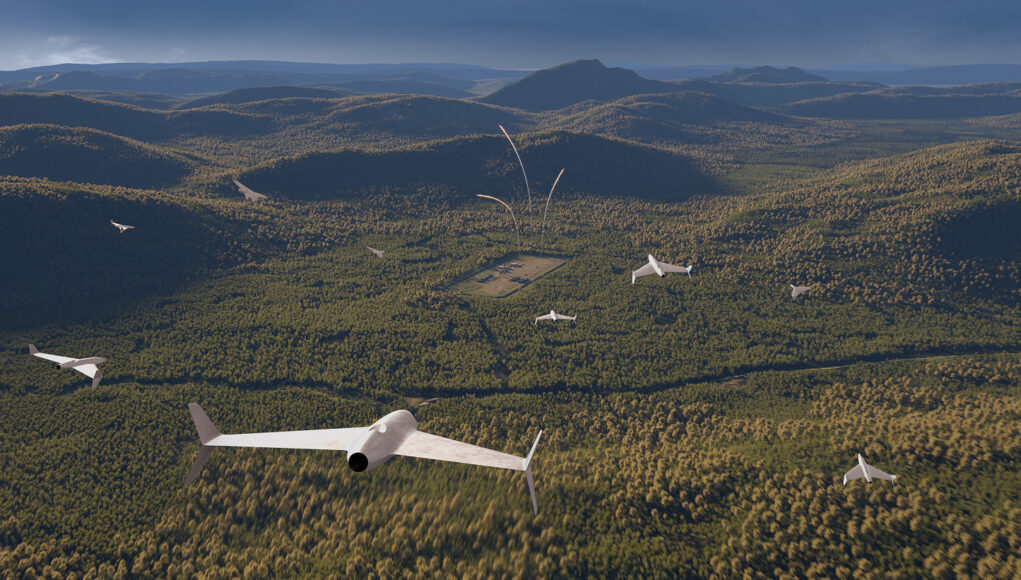
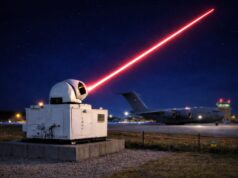

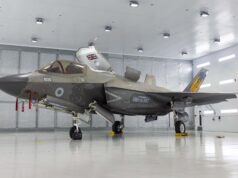
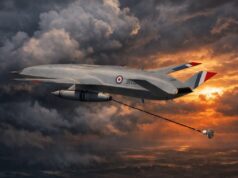

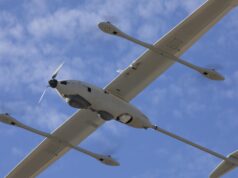


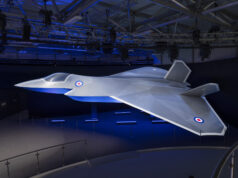


The future is clearly here, it’s not like Israel didn’t use a saturation attack of low cost drones in the Beqaa valley in 1982 😀
Thanks for this innovation MBDA, really setting a high bar. All you need to do now is mention AI 😂
Size? Range? Cost?
“in the 500 km class”. I’m guessing that’s range rather than size.
MBDA are hedging their bets on whether the Govt 6000 strike weapons pledge is going to be mostly loitering munitions like the one above (which seems to be a sort of jet-powered Shahed) or FC/ASW and larger cruise missiles.
A sensible strategy, particularly as we will need some of both.
All part of the new strategy that’s ignored at our peril.
These sort of systems need to be deliverable via ground launch and mass air launched C17/A400 pallet dispenser.
We absolutely need another batch of A400 for sure, if we are going to take things seriously.
The former.
The “7,000 missiles” sounds like standard government spin.
Probably including 155mm Artillery shells mate!
😲 They spin, but that wouod be a spin too far!
We really need to be thinking how do we defended against these types of attack.. because if you follow this paridgm to its logical conclusion day one of the war is not stealth bombers and precision cruised missile strikes its 10,000+ cheap suicide drones launched from shipping containers.
It is why having things like radar controlled 40mm around bases is pretty essential as you can stockpile a lot of 40mm for not a lot of money and quickly make more of it.
A Hi-Lo mix of weapons is essential so UK can save the HI for where it is really needed.
I’d hope the 7,000 is Storm Shadow /ASTER / Anglo/French land and Sea Attack / NSM.
If you start including Sea Ceptor /Sky Sabre then you get to those numbers very quickly. As I would expect three thousand of those minimum. 24 ships with say 24 missiles then multiply for reloads and then factor in that we don’t have PATRIOT etc.
Morning SB, Whilst I like the BAE 40mm, I am not sure about using them for point defence of critical areas such as airfield, naval bases, energy sites, etc. Possibly a better method would be the Sky Ranger/ Sky Knight mix. Point defence out to 10 km with 2-4 20ft containers with 60 missiles each backed up with 4 30/35mm Rheinmetall Sky Ranger Oerlikon guns. This would mean that with 4 containers you could engage up to 80 targets at one time and 20 seconds later a further 80. Germany and Rheinmetall seem to like the concept. This Skynex system would have area protection of Sky Sabre and SAMPT.
This would be my idea of a Hi/Lo mix for area defence and point defence. The other advantage of this type of point defence system would be that it is transportable. I think Sky Knight can also be used at sea These are off the shelf solutions that should be cost effective
I was assuming that we had some Sky Sabre locally which was controlled remotely
This gives a Hi-Lo mix so you don’t expend expensive munitions on low end threats that some shrapnel from a 40mm airburst would cope with.
I’m not sure you can Jonathan, unless there’s a new technology that’s affordable in huge numbers and can electronically knock such drones out of the sky…
The UK has a vast coastline, the sort of mass drone attack that could be launched for a disguised container ship simply can’t be countered by conventional means.
Imagine those Ukrainian Container type attacks, launched from dozens of containers on a 100,000 ton container ship, so thousands of drones from a few miles out to sea, striking a key coastal target, military or Civilian.
There is nothing that anyone in the world could do, but grit your teeth and watch.
It is one thing if the drones hit farmland and quite another if it is CNI.
UK needs to get serious about protecting CNI.
That means spending money.
Areas like grid to power transformers and high pressure gas nodes need a degree of protection – not hand wringing.
The latter.
We all know HMG do not have it in them. They have other priorities
Don’t agee with this outlook totally. Agree thst we csn be taken by surprise but international shipping is already very highly interlinked and monitored. Anything suspicious, not following the usual rules etc, should hopefully standout and be acted on quickly. Hopefully there’ll be some actual GBAD in place for the UK like in Europe and deployable ashms to take out suspicious ships. You don’t have to sit, watch and take it.
Was thinking upon this, once conflict has begun I suspect action could be taken pretty quickly however as a first strike conflict starting act I’m not sure how much can be done to prevent it. We have had Russia’s shadow tanker fleet moving through the North Sea and Channel and we have to just watch, so at what point does one pre-empt such matters prior to any hot part of any conflict breaking out, you can bet Russia (indeed China which is probably a bigger threat in this regard down the line) would exploit this ‘phony’ war stage.
So defences against such a strike seem vital to me in relative depth even if one accepts they might not have immediate capacity to be prolonged in the minimum expectation that such vessels would represent only a short term if initially substantial danger.
Unfortunately Quentin, we have thousands of shipping containers landing in the UK every day, with many thousands more transiting the English Channel, if you think everyone has verified inspected contents, you are sadly mistaken.
There isn’t a single country in the world capable of stopping a zero notice, mass small drone attack, you wouldn’t stop a fraction of
them unfortunately!
We will require a new generation of targeting electronic attack systems in considerable
quantity.
You talk about acting quickly, but how? We have no GBAD to hit the drones and virtually no anti-ship missiles to sink the source. Buying half-a-dozen NSM coastal batteries would set us back maybe £1.5bn, and there are no plans for that. Having an anti-ship missile on Typhoon would be nice, but until FC/ASW comes next decade, the best we can manage would be Paveway IV guided in by a helicopter, and how long would a helicopter take to reach a ship discharging dozens of drones? Too long.
“to create a production capacity capable of outputting up to 1,000 units per month.”
FPV drones are being produced at a rate of about a million a year by both Ukraine and Russia, and those are precision. Is up to one thousand units a month for a non-precision strike really a sustainable number throughout the conflict as claimed? It’s far longer range than aritillery or FPV, but the numbers seem decidedly lightweight. That makes me worry about cost. Are the numbers that low because the cost is high? This attritional game is attack cost versus interceptor/damage cost. Makes me wonder how well it can survive a laser hit.
“Each unit carries a warhead large enough to compel engagement, regardless of whether it strikes a valuable target.”
What compels the enemy from letting it hit a field where there’s a low damage cost? Israel calculates where missiles are likely to hit and just leaves some of them, despite having relatively cheap interceptor missiles.
I think that is a very important question isn’t it.
Thousand per month: I presume thus is an immediate supply from MBDA and its agreed satellite suppliers, ie a core supply immediately available, hopefully not speaking for the whole potential supply chain. Other options one would hope be available and new alternatives becoming available hopefully quickly, while this core supply chain keeps us in the fight.
Non – precision: What’s the definition of this? I have heard different takes over time, there is no real universal agreement on the term. Are Shaheed and their ilk deemed ‘precision’ depends on what your target is I guess, ie a terror weapon against a town or City, or a something much, much smaller it depends on perspective give and motives. It certainly is used as a distraction in the nature of the weapon proposed here with its emphasis on milking defensive weaponry so more precise weaponry can be better exploited. Not sure that one can presume their accuracy is such that they may be hitting fuels as often as towns or even smaller targets, even Houthis generally do better than that. Similar distracting drones are also a vital part of Ukraine’s successful attacks, particularly on Crimea it’s worth noting. So how grey is the term ‘precision’ generally, or in particular the proposed MBDA solution. I wouldn’t think a relatively accurate targeting system (if one is a little liberal in the ‘precise’ term) is that expensive, protecting it from interference or adding redundancy is probably the costly area but if you concentrate on mass over complexity you at some point will gain a lot more than you lose, so determining that point (which won’t be constant in any ongoing conflict) will be the important part of any such calculation.
Promises, promises, promises, lots of lovely graphics and pictures, nothing bought or used as promised or they get nicked as toys for their kids, it happened before and it will again.
This topic has been discussed for nearly three decades and nothing has ever come to fruition, but it looks good at all of trade fairs that I have ever attended.
Already years behind the curve.
They should read more military sci fi they covered this years ago.